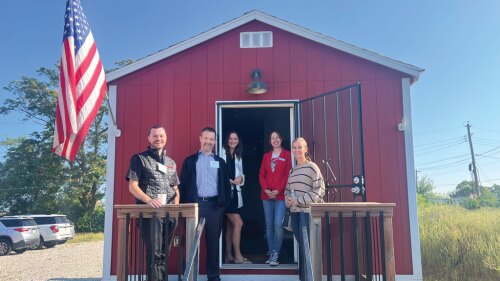In meteorological parlance, a perfect storm is used to describe a severe one resulting from a rare combination of phenomena. Commercial real estate already faces many challenges because of an unprecedented rise in interest rates, tightening credit capacity, uncertainty in the office market, a $2.6 trillion wave of maturing debt over the next four years, and overall economic anxiety.
Adding to this complexity, financial regulators are pushing for a significant increase in capital requirements—by as much as 20 percent—for the nation’s largest banks via the Basel III “endgame.” It will result in material costs to real estate credit and capital markets—as well as to the broader economy—that will not be outweighed by any marginal financial stability benefits.
The agencies should exercise caution with the imposition of pro-cyclical measures that might further diminish credit capacity and weaken economic conditions. The wave of commercial real estate debt maturities and demand for new construction—particularly for multifamily housing—is already testing capacity levels.
It is important to maintain credit capacity in the $5.5 trillion commercial real estate credit markets, some 50.3 percent of which is held by commercial banks. Smaller banks hold approximately $2.3 trillion in commercial real estate debt. Regulators should therefore carefully weigh the costs and benefits of these capital reforms to ensure that they achieve an appropriate balance between financial stability and broader economic growth.
The largest U.S. banks’ capital and liquidity levels have grown dramatically since the original Basel III standards were implemented, in 2013, as a response to the 2008 Global Financial Crisis. Since 2009, Tier 1 capital has increased by 56 percent and Common Equity Tier 1 capital has tripled. As the Federal Reserve recently observed, the United States’ “banking system is sound and resilient, with strong capital and liquidity.”
Not only is the imposition of a punitive capital charge unjustified at this time, regulators failed to provide justification for such an increase. So, it is not clear what problem regulators are trying to solve with this proposed capital hike.
In addition to the proposed capital increases for banks, the Securities and Exchange Commission (SEC) has a number of proposed and recently adopted rulemaking measures that could have a chilling effect on real estate capital formation—which could further impair liquidity and be a “death by a thousand cuts” for commercial real estate capital markets.
These proposed regulations come at a significant economic cost and without clear benefits to the resiliency of the financial system. Capital formation is vital when credit markets tighten to restructure maturing debt and fill the equity gap. So, there is concern about the potential for a perfect storm of regulations that could stall credit markets and impair capital formation.
As requested in The Real Estate Roundtable’s March 17, 2023 letter, the June 30, 2023 Policy Statement on Prudent Commercial Real Estate Loan Accommodations and Workouts calls for “financial institutions to work prudently and constructively with creditworthy borrowers during times of financial stress.”
According to a recent Trepp research report, some $5.65 billion in commercial real estate loans have already been restructured this year.
To help rebalance these maturing loans, it is important to advance measures that will encourage additional capital formation. To that end, it is essential to bring more foreign capital into U.S. real estate by lifting legal barriers to investment, as well as to repeal or reform the archaic Foreign Investment in Real Property Tax Act (FIRPTA). Importantly, policymakers must not hike the tax rate on capital gains, end carried interest, or alter the 1031 like-kind exchange provisions.
As former Federal Reserve Vice Chair Randal Quarles said recently, “If cool heads and expert analysis prevail in Congress and at the banking agencies, we can avoid the political stampede to a destructive regulatory response that would do much more damage.”
CLIFTON E. RODGERS, JR. is senior vice president of The Real Estate Roundtable, a nonprofit public policy organization based in Washington, D.C.





